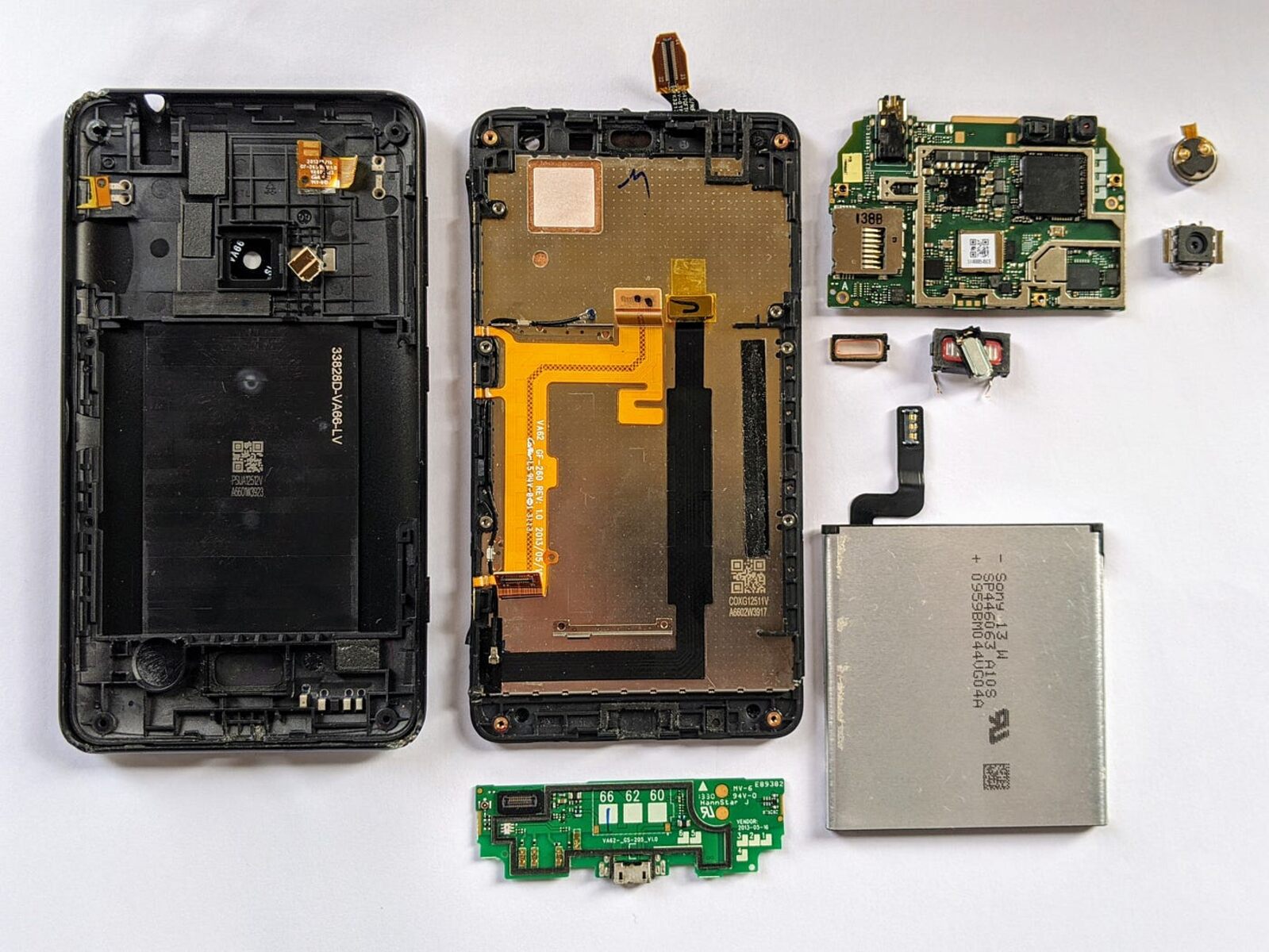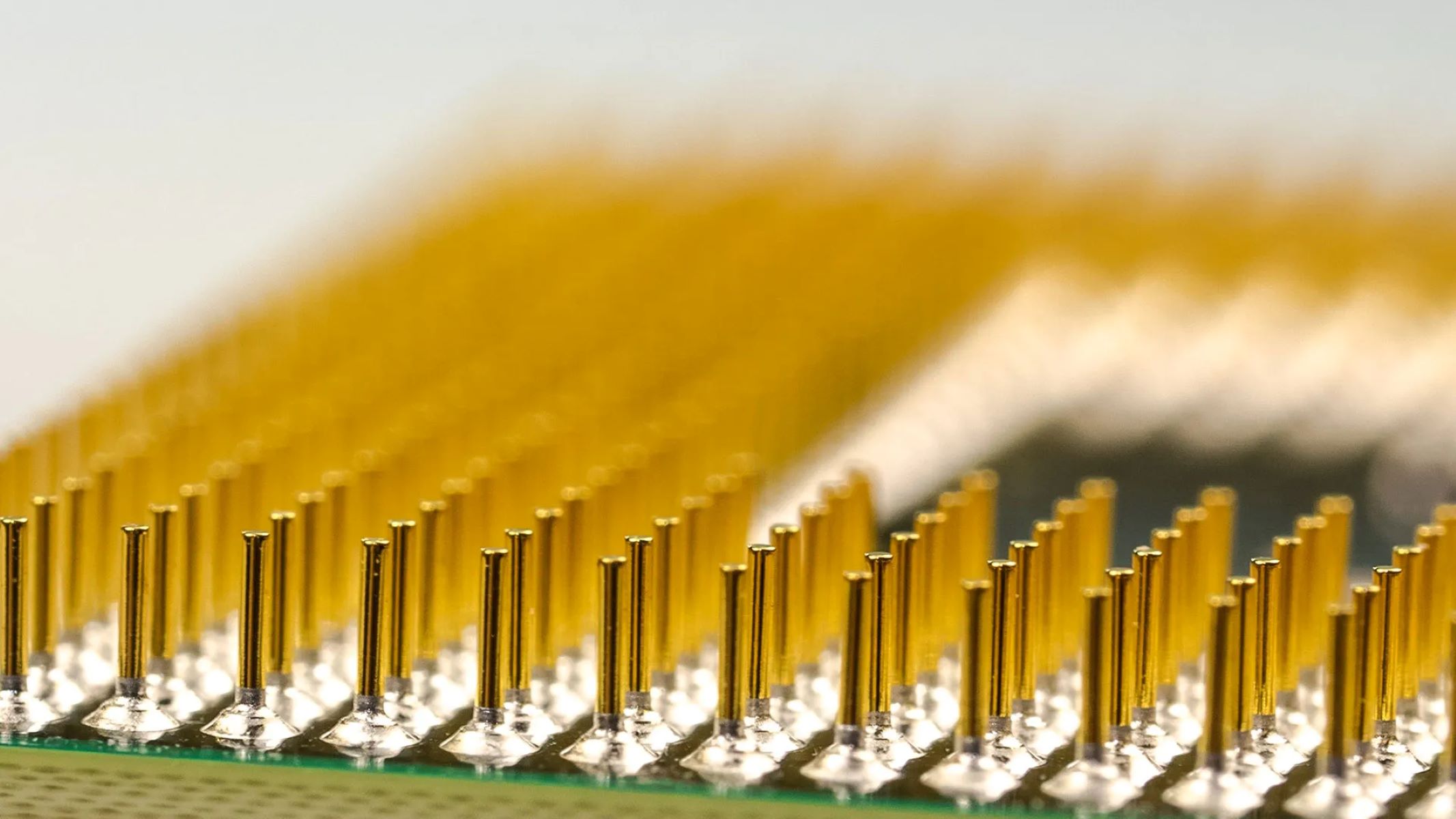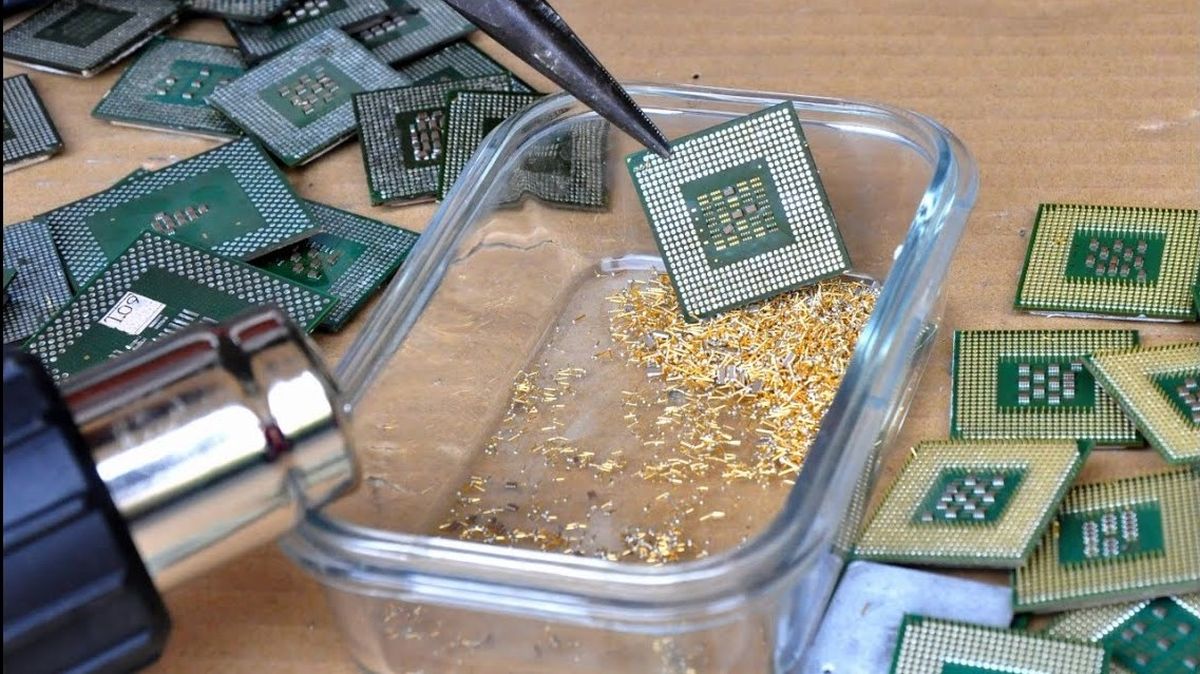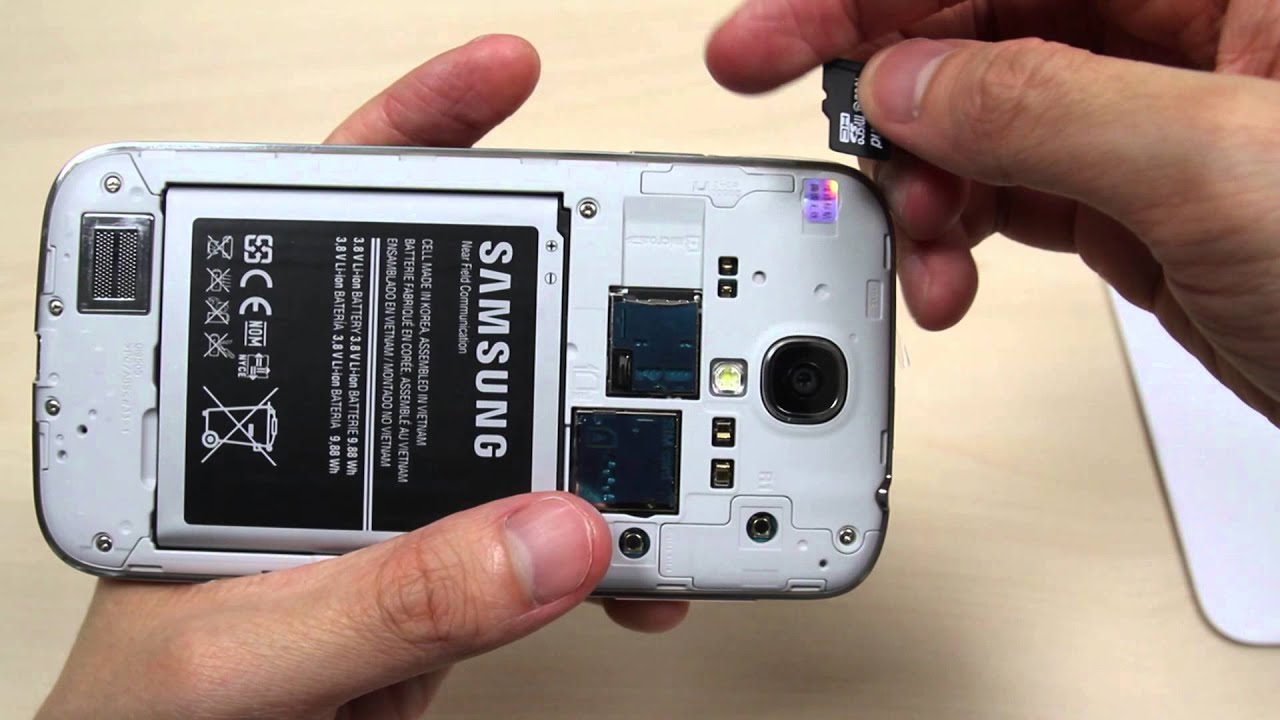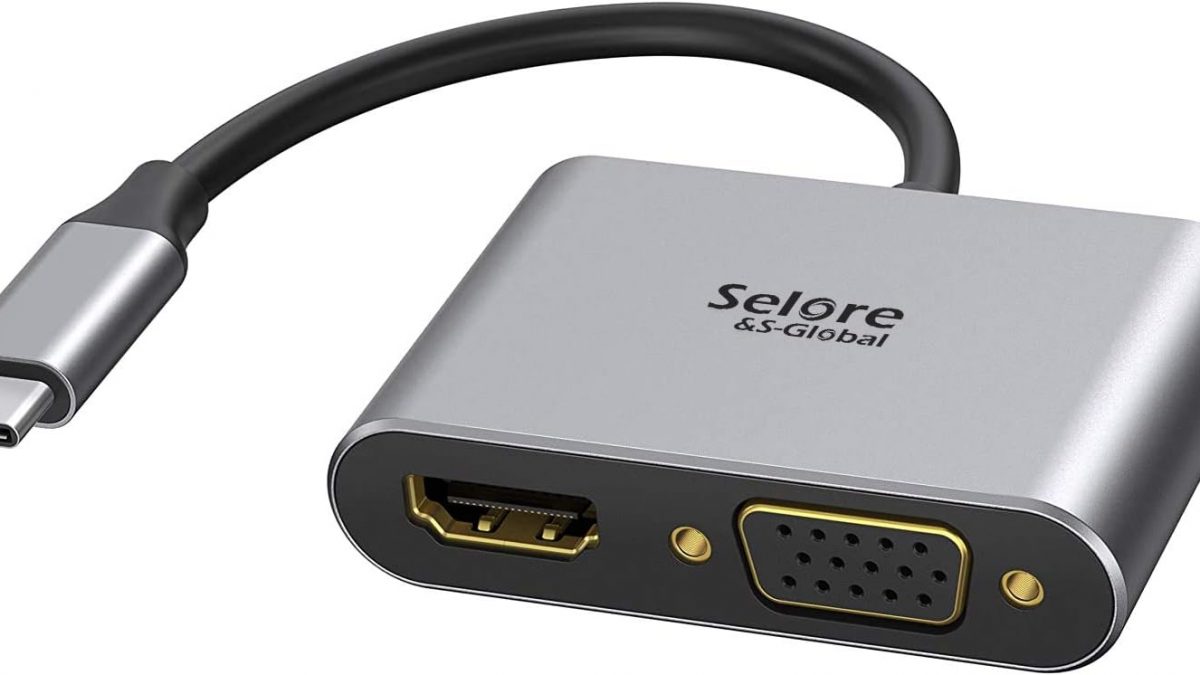Introduction
Smartphones have become an integral part of our daily lives, serving as communication devices, entertainment hubs, and productivity tools. But have you ever wondered about the hidden treasures that lie within these sleek gadgets? Among the numerous components that make up a smartphone, one precious element stands out: gold.
Gold has long been valued for its beauty and rarity, but its importance in the world of technology is often overlooked. In fact, the role of gold in smartphones goes beyond merely adding a touch of luxury. It plays a crucial role in ensuring the smooth functioning of these devices.
In this article, we will delve into the world of gold in smartphones, exploring its uses, the amount contained in these devices, the extraction process, and the environmental implications. Additionally, we will highlight the significance of recycling gold from smartphones to minimize waste and preserve valuable resources.
So, get ready to discover the hidden worth of these pocket-sized gadgets as we unveil the secrets behind the gold in smartphones.
The Role of Gold in Smartphones
Gold may not come to mind when you think of the inner workings of a smartphone, but it plays a vital role in enabling these devices to function effectively. The unique properties of gold make it an ideal choice for various components within smartphones.
One of the primary uses of gold in smartphones is for electrical conductivity. Gold is an exceptional conductor of electricity, allowing for efficient transmission of signals and data within the device. It helps to minimize signal loss and ensures that information is transmitted accurately and swiftly.
Gold is also highly resistant to corrosion, making it ideal for contacts and connectors within smartphones. These contacts are responsible for establishing connections between different components, such as the microprocessor, memory, and display. By using gold contacts, the risk of corrosion is reduced, ensuring reliable and long-lasting performance of the device.
Furthermore, gold is used in bonding wires that connect semiconductor chips to the inner circuitry of the smartphone. These wires need to be strong, durable, and capable of conducting electricity efficiently. Gold fulfills all these requirements, ensuring the integrity and stability of the smartphone’s electrical connections.
Another key role of gold in smartphones is its use in the production of printed circuit boards (PCBs). PCBs act as the central nervous system of the device, housing various components and providing pathways for electrical signals. Gold is used to create the thin layers that facilitate the flow of current between different components, ensuring efficient and reliable circuitry.
While gold may not be the most prominent feature of a smartphone, its presence is essential for the device to operate at its full potential. Without gold, the smooth functioning and performance of smartphones would be compromised.
What is Gold Used for in Smartphones?
Gold finds its way into various components of smartphones, contributing to their functionality and durability. Let’s explore some of the key uses of gold in these devices.
One of the primary uses of gold in smartphones is for the production of connectors and contacts. These connectors play a crucial role in establishing electrical connections between different parts of the device. Gold’s exceptional conductivity ensures efficient transmission of electrical signals, minimizing interference and signal loss.
Gold is also used in bonding wires that connect semiconductor chips to the inner circuitry of smartphones. These wires need to be strong, durable, and capable of conducting electricity effectively. Gold meets all these requirements, providing a reliable connection between the chips and the rest of the device.
Printed circuit boards (PCBs) in smartphones also incorporate gold. PCBs are the backbone of the device, providing pathways for electrical signals and connecting various components. The use of gold in PCBs ensures high conductivity, enabling reliable and efficient electrical connections.
In addition to these electrical components, gold is used in the construction of the smartphone’s screen. Gold nanoparticles are incorporated into the glass to enhance its strength and scratch resistance. This ensures that the screen can withstand daily wear and tear, improving the durability and longevity of the device.
Another important use of gold in smartphones is in the solder used for joining different components together. The use of gold solder helps to create strong and reliable connections, ensuring the stability and functionality of the device.
Overall, gold plays a diverse and critical role in various components of smartphones. Its exceptional conductivity, durability, and anti-corrosive properties contribute to the smooth operation and longevity of these devices.
The Amount of Gold in a Smartphone
While gold is a valuable and precious metal, you might be surprised to learn that the amount of gold in a smartphone is relatively small. However, every tiny speck of gold within these devices holds significant value and serves a crucial purpose.
On average, a smartphone contains approximately 50 milligrams (mg) of gold. To put this into perspective, 50 mg is equivalent to just about the weight of a small paperclip. Despite its small size, this amount of gold is carefully distributed across various components within the device.
One of the main areas where gold is concentrated in a smartphone is the printed circuit boards (PCBs) that form the core of the device. PCBs contain a thin layer of gold that is strategically placed to facilitate the flow of electrical current. This layer is so thin that it takes only a few milligrams of gold to cover a large surface area.
In addition to the PCBs, gold is also found in the connectors and contacts within smartphones. The use of gold in these components ensures reliable electrical conductivity, minimizing signal loss and maintaining the device’s performance.
It is worth noting that the amount of gold in a smartphone can vary slightly depending on the brand, model, and specific design of the device. Manufacturers aim to optimize the use of gold to achieve the desired performance while keeping the cost and environmental impact in mind.
Although the amount of gold in a smartphone may be small, its value should not be underestimated. Gold is a precious and finite resource, and the small quantities found in smartphones contribute to the overall demand for this valuable metal.
As our reliance on smartphones continues to grow, it is important to recognize the significance of the gold within these devices and the impact it has on various industries, including mining and recycling.
How is Gold Extracted from Smartphones?
Extracting gold from smartphones is a complex and specialized process that involves several steps to recover the precious metal. Let’s take a closer look at how gold is extracted from these electronic devices.
The first step in the process is the collection and dismantling of the smartphones. Skilled technicians carefully disassemble the devices, separating the various components. The goal is to isolate the components that contain gold, such as the printed circuit boards (PCBs), connectors, and contacts.
Once the components have been collected, the next step is the mechanical processing of the material. This involves shredding the components into smaller pieces, allowing for easier separation of the different materials. The shredded material is then subjected to further mechanical processes, such as crushing and grinding, to separate the gold-bearing components from the rest of the material.
After the mechanical processing, the material goes through a series of chemical treatments. The gold-bearing components are typically treated with chemicals, such as acids or cyanide solutions, to dissolve the gold and separate it from other metals and impurities. This process is known as leaching.
Once the gold has been leached from the components, it is further purified through processes such as precipitation or electroplating. These methods help to separate the gold from the solution and refine it to a higher level of purity.
The final step in the extraction process is the collection and recovery of the purified gold. Depending on the scale of the operation and the level of refinement needed, the gold may be recovered as solid flakes or pellets, or it may undergo further purification through melting and casting into ingots or bars.
It is important to note that the extraction of gold from smartphones is a specialized and often resource-intensive process. It requires sophisticated equipment and expertise to ensure proper handling and to minimize any potential environmental impact.
As the demand for gold continues to rise, the development of more efficient and sustainable methods for extracting gold from smartphones and other electronic devices is crucial. This will not only help to recover valuable resources but also reduce the need for environmentally destructive gold mining practices.
The Environmental Impact of Gold Mining for Smartphones
The extraction of gold for use in smartphones has significant environmental implications, particularly when it comes to traditional gold mining methods. While gold mining is essential for sourcing this precious metal, it is important to consider the environmental impact associated with the process.
One of the major environmental concerns of gold mining is the destruction of natural habitats and ecosystems. Gold deposits are often found in pristine areas such as rainforests and riverbeds. To access these deposits, trees are cut down, and vegetation is cleared, leading to deforestation and the loss of biodiversity. The removal of vegetation can destabilize soil, leading to erosion and the loss of fertile land.
In addition to habitat destruction, gold mining has the potential to release toxic substances into the environment. During the extraction process, large quantities of chemicals such as mercury and cyanide are used to separate gold from the surrounding soil and rock. Improper handling of these chemicals can lead to water and soil contamination, posing a risk to both human health and the environment.
Furthermore, gold mining requires significant amounts of energy and water. The extraction process involves crushing, grinding, and processing large volumes of ore. This requires substantial energy inputs, contributing to greenhouse gas emissions and climate change. The demand for water in gold mining operations can also strain local water sources, leading to water scarcity and impacting the surrounding ecosystems.
Gold mining also generates a substantial amount of waste. The rocks and soil that are removed during the mining process, known as mine tailings, are often stored in open-air pits or disposed of in nearby rivers or streams. These tailings can contain heavy metals and other toxic substances, posing a long-term risk to nearby communities and water sources.
While the environmental impact of gold mining for smartphones is significant, there is growing awareness and efforts to address these issues. Sustainable mining practices, such as responsible sourcing and stricter regulations, are being implemented to minimize the negative impacts on the environment.
Additionally, initiatives for recycling and recovering gold from electronic waste, including smartphones, are gaining traction. Recycling not only reduces the need for new gold mining but also helps to prevent the improper disposal of electronic waste, reducing the overall environmental impact of gold extraction.
It is essential for manufacturers, consumers, and policymakers to prioritize sustainable and responsible practices throughout the lifecycle of smartphones to mitigate the environmental impact of gold mining and promote a greener future.
The Importance of Recycling Gold from Smartphones
Recycling gold from smartphones is becoming increasingly important in an era of resource scarcity and environmental consciousness. By recycling gold from these electronic devices, we can reduce the need for destructive mining practices, conserve valuable resources, and minimize the environmental impact associated with gold extraction.
One of the key benefits of recycling gold from smartphones is the conservation of natural resources. Gold is a finite resource, and the demand for it continues to rise. By recycling gold from old smartphones, we can recover and reuse this precious metal, reducing the need for new mining operations. This helps to preserve natural habitats, minimize deforestation, and protect ecosystems that would otherwise be disrupted by gold mining activities.
In addition to resource conservation, recycling gold from smartphones also reduces the release of toxic substances into the environment. When electronic waste, including smartphones, is improperly disposed of or incinerated, it can release harmful chemicals and heavy metals into the air, soil, and water. By recycling these devices and recovering the gold, we not only prevent the improper disposal of electronic waste but also ensure that toxic substances are properly managed and do not pose a risk to human health or the environment.
Furthermore, recycling gold from smartphones reduces energy consumption and greenhouse gas emissions. The extraction of gold from ore requires a significant amount of energy, contributing to carbon emissions and climate change. By recycling gold, we can reduce the need for energy-intensive mining processes, leading to lowered carbon footprints and a more sustainable approach to sourcing this precious metal.
Recycling gold from smartphones also has economic benefits. As the demand for gold continues to grow, recycling presents an opportunity to meet this demand through a more cost-effective and sustainable method. It creates employment opportunities in the recycling industry, promotes innovation in recycling technologies, and contributes to the circular economy by turning electronic waste into valuable resources.
Additionally, by recycling gold from smartphones, we can reduce the burden on landfill sites. Electronic waste, including smartphones, is a significant contributor to the ever-growing waste problem. Proper recycling ensures that valuable materials like gold are recovered and reused, minimizing the amount of waste that ends up in landfills and reducing the pressure on waste management systems.
Overall, the importance of recycling gold from smartphones cannot be overstated. It helps to conserve natural resources, mitigate environmental impact, reduce toxic pollution, lower energy consumption, stimulate economic opportunities, and divert electronic waste from landfills. By actively participating in and supporting gold recycling initiatives, we can contribute to a more sustainable and responsible approach to the use and disposal of electronic devices.
Conclusion
Gold plays a crucial role in the world of smartphones, contributing to their functionality, reliability, and durability. While the amount of gold in a smartphone may be small, its presence is significant in the various components that make up these devices.
The unique properties of gold, such as its exceptional conductivity and resistance to corrosion, make it an ideal choice for electrical contacts, connectors, bonding wires, and printed circuit boards (PCBs). These components ensure efficient transmission of electrical signals and reliable connections within smartphones.
However, it is important to consider the environmental impact associated with gold mining for smartphones. Traditional mining practices can lead to habitat destruction, water and soil contamination, carbon emissions, and the generation of waste. To mitigate these issues, sustainable mining practices and initiatives for recycling and recovering gold from electronic waste are gaining importance.
Recycling gold from smartphones brings numerous benefits. It conserves natural resources, reduces the reliance on destructive mining practices, minimizes the release of toxic substances into the environment, lowers energy consumption, and stimulates economic opportunities. Additionally, recycling contributes to the circular economy by turning electronic waste into valuable resources.
In conclusion, while gold may be a hidden treasure within smartphones, it is a valuable and precious resource that should be responsibly sourced and recycled. By recognizing the importance of gold in smartphones and adopting sustainable practices, we can contribute to a greener future and ensure the longevity of these devices while preserving our environment for generations to come.







